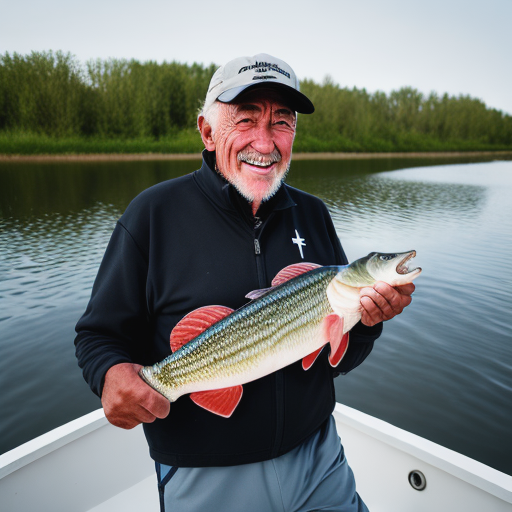Fly fishing is more than just imitating underwater bugs. It’s knowing how bugs that live on land, like ants, beetles, crickets, and grasshoppers, are important too. These bugs are a big part of what trout eat, especially at certain times of the year. Learning to use flies that look like these bugs can really help you catch more fish.
Key Takeaways:
- Terrestrial insects are an essential food source for trout during certain times of the year.
- Fishing with terrestrial insect patterns can greatly increase your chances of success.
- Terrestrial patterns such as ants, beetles, crickets, and grasshoppers are effective imitations for fly fishing.
- The best time of year to fish with terrestrial patterns is during the summer months when these insects are abundant.
- Observing trout behavior and using effective techniques can enhance your terrestrial fishing experience.
The Importance of Terrestrial Patterns in Fly Fishing
In the fly fishing world, knowing about terrestrial patterns is key to doing well. These mimic insects that fall into water. This includes ants, beetles, crickets, and grasshoppers. They are great for luring in trout and other fish.
During summer, these land insects are a big part of what trout eat. They are rich in energy and a tasty meal. When a fish sees a good terrestrial pattern, they often go for it more than regular water bugs.
Terrestrial patterns are very important in attracting trout. This is because these insects are all around and provide a lot of nutrients. Having these patterns in your fly box can help you catch bigger fish.
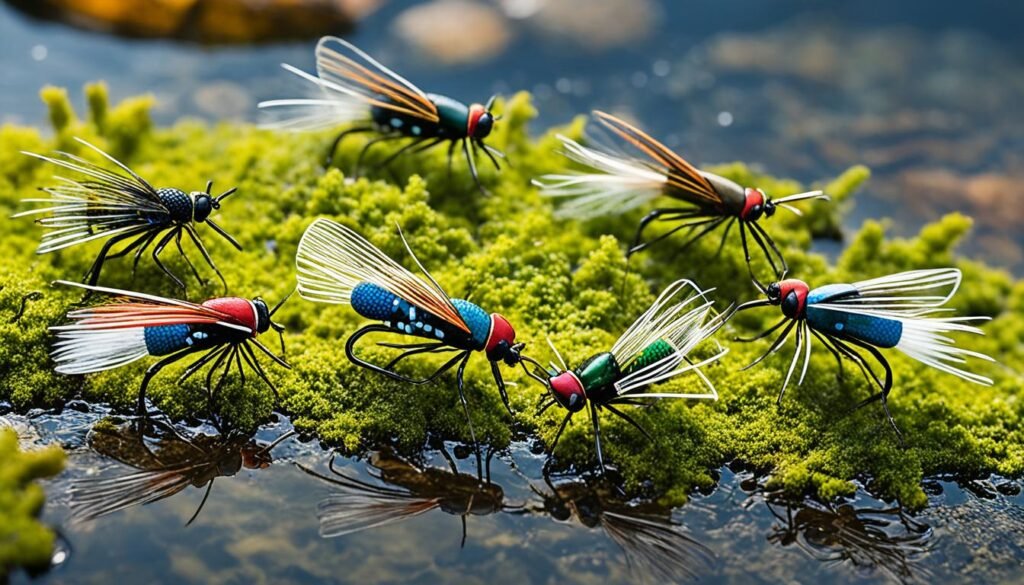
By using patterns that look like the insects trout love, you can catch more fish. No matter if you’re at a high mountain stream or spring creek, terrestrials are a key choice.
These patterns work well in many places and times. Learning about terrestrials and using them can make your fly fishing awesome.
When picking your patterns, think about what bugs are around where you fish. Match the size and color to these insects. Also, knowing when these insects are most active can help you choose the right time to fish them.
The Intriguing World of Terrestrial Patterns
There’s a lot to choose from when it comes to terrestrial patterns. From foam ants to realistic grasshoppers, there’s something for everyone.
Some popular ones are:
- Parachute Adams
- Hare’s Ear Nymph
- Elk Hair Caddis
- Rubber Leg Stimulator
Each pattern has something that might attract trout. It’s good to try different ones and see what fish like best.
“Terrestrial patterns imitate insects that trout actively seek out, making them effective choices for fly anglers.” – Joe Angler
Being good at fishing with these patterns can really help you catch more trout. It’s great for beginners and experts alike. Fill your fly box with terrestrials and enjoy fishing.
| Advantages of Terrestrial Patterns | Challenges of Terrestrial Patterns |
|---|---|
|
|
Exploring terrestrial patterns can make your fly fishing adventure amazing. These patterns are vital in fishing for trout. Use them well and you’ll see your fishing improve.
Best Time of Year to Fish with Terrestrials
When fishing with terrestrials, timing is everything. Knowing the best time of year can boost your success. The top months for this type of fishing are June, July, and August.
In summer, terrestrial insects are everywhere. They offer trout a big, tasty meal. About 70% of what trout eat in summer are terrestrials. This makes summer the perfect time for this type of fishing.
Wondering why summer is prime for terrestrial fishing? It’s about the bugs. These insects are very active then. They easily end up in the water, drawing trout to eat them.
Fishing with terrestrials is best when the wind is blowing and from the late morning to evening. This is when the insects are most likely to land on the water. Trout notice and go for them.
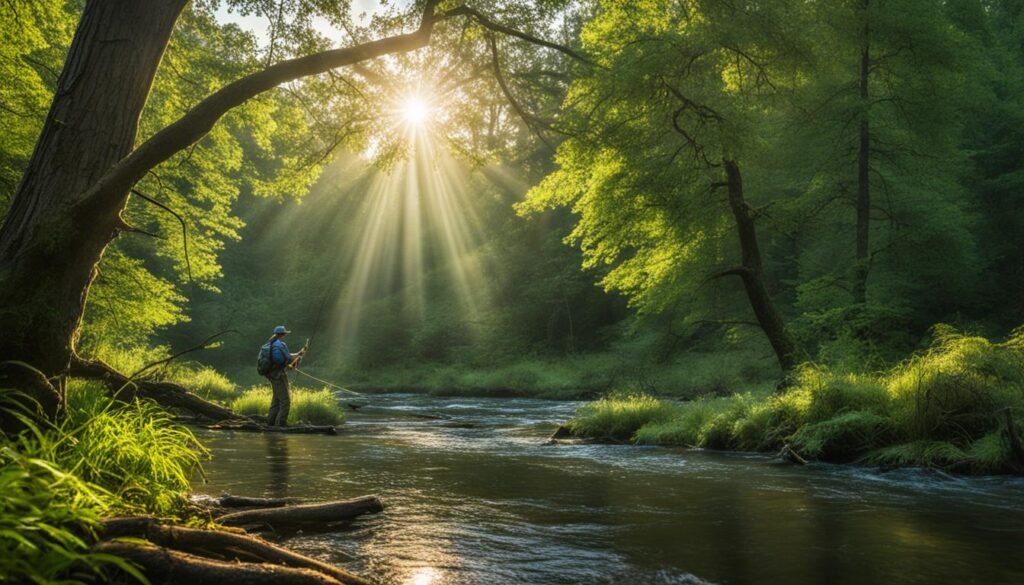
To catch more trout with terrestrials, focus on the summer. Arm yourself with ant, beetle, cricket, and hopper imitations. These are what the fish are looking for.
How to Fish with Terrestrial Patterns
Fishing with terrestrial patterns uses many techniques to up your chances. To catch trout, you need to know how they and their bug prey behave. This helps you choose the best way to attack.
Choose the right spot to fish. Go for shaded areas with overhanging branches where trout hide. These areas are also where land bugs end up in the water.
When you cast, aim carefully at the best spots, even if the fish aren’t jumping. Trout usually eat one bug at a time. Good aim is crucial. If you’re not landing any fish, try a new spot where fish might be more active.
Moving your fly can help get a trout’s attention. Try twitching or sliding it slowly. This imitates a bug that’s trying to escape, and it might make the trout bite.
Using a dry dropper rig can also work well. This setup has a drowned bug or nymph under a dry fly. It looks like a bug floating in the water, which can attract hungry fish.
Stay quiet and watch closely when you’re by the water. Notice any small hints that trout are feeding. Signs like rings in the water or bugs vanishing can tell you where the fish are.
Fishing with terrestrial patterns needs time and effort. Use the right tactics, and you can have a fantastic time and plenty of catches.
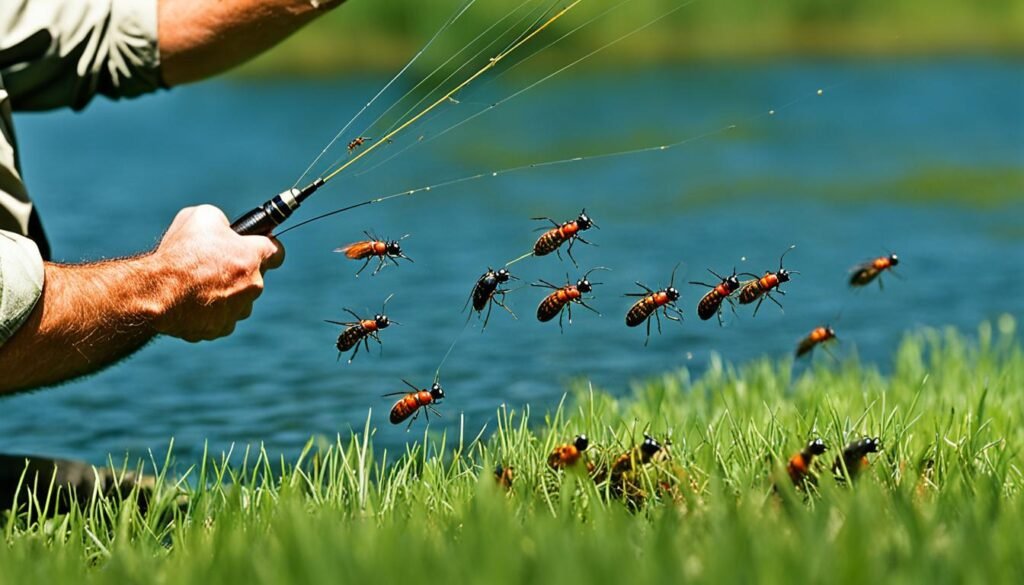
Terrestrial Patterns for Fly Fishing
When fly fishing with terrestrials, some patterns work really well. Ants and grasshoppers are favorites of trout. Ant patterns shine after a downpour, when real ants fall in the water. This draws trout to eat. Grasshopper patterns are great in the summer. They mimic the bugs trout love to eat in the heat.
It’s important to make your flies look like the real bugs in your area. This way, you catch the trout’s eye. Match your fly’s size and color closely. This makes your fly the trout’s next tasty bite.
Don’t forget about beetles and crickets. They are also popular to fish with. Just like with ants and grasshoppers, trout go for these insects. This makes them a smart choice for fly fishing.
“The key to success when fishing with terrestrial patterns is to mimic the natural insects found in the area. This attention to detail pays off in more fish on the line.” – Fly Fishing Pro
Expert Tip: Experiment with Different Patterns
Using different patterns is a good idea, even if ants and grasshoppers are the go-to’s. Every area has different insects. So, trout might get picky. Trying out various patterns can help you find what works best.
Check out these great fly patterns for fishing:
- Beetle imitations, like the Parachute Beetle or the Black Foam Beetle
- Cricket imitations, such as the Crowd Pleaser Cricket or the Charlie Boy Cricket
- Hopper imitations, for example, Dave’s Hopper or Parachute Hopper
Learning from local bugs helps. It’s key to picking the right flies. With the right flies and keen observation, you’ll have a great fishing trip.
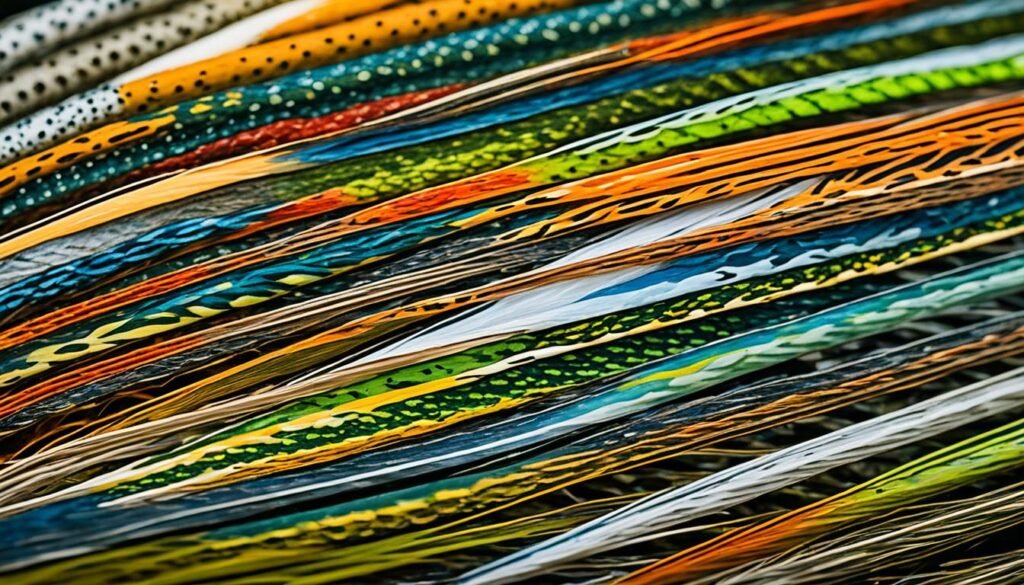
Trout Behavior and Terrestrial Feeding Habits
Trout love to eat insects that come from the land. These bugs are a big part of what trout eat all year. Research shows trout are good at figuring out if their meal is worth eating. They match what they burn with what they eat very well.
Beetles and grasshoppers are favorites among bigger trout. They are rich in calories, which is great for trout trying to get as much energy as they can. When there are a lot of these bugs around, you’ll see a change in how trout act and eat.
Trout actively look for these land insects at certain times. For example, they go after them when they drop on the water from plants. This shows they really like these bugs because they are almost always there and give great energy. Bigger trout especially go for these as they know they are good for their health and growth.
If you want to catch lots of trout when fly fishing, know this. Use fake insects that look real and act right. This way, trout are more likely to come after your hook. Make sure your fake bugs look and move like the ones in the area where you’re fishing.
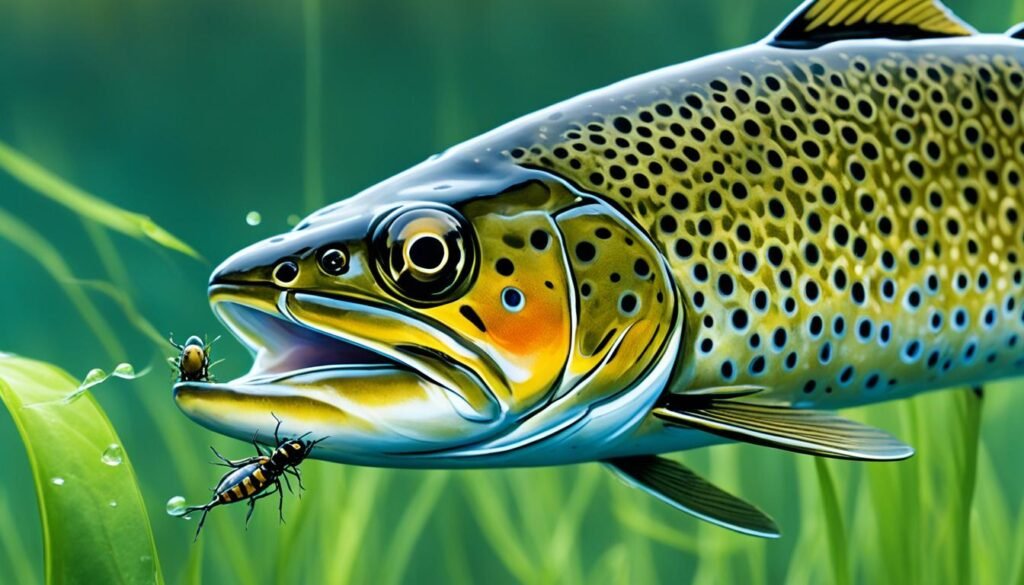
Seeing trout feed on land insects in the water is key. Watch for small splashes on the water. This means trout are eating bugs. Black noses poking out are another sign they are after these insects. And if a grasshopper drops on the water and seems to vanish, a trout might be after it.
Knowing how trout eat land bugs helps anglers catch more fish. Use the right tactics by copying what real bugs look like. Also, watch out for clues that fish are eating these bugs. Doing this, and setting up your gear well, can really up your chances of catching trout.
Terrestrial Fishing Tips and Techniques
Fishing with terrestrials has its own set of tips and strategies. Knowing these can help boost your success. Here’s what you need to know:
- Be Stealthy: Trout spook easily. Approach the water quietly to avoid scaring them away. Moving without noise is key.
- Use Floating Patterns: Terrestrials sink when they hit water. Pick flies like beetles or hoppers that stay on top. This makes them more visible to fish.
- Add Movement: A fly that sits still might not attract trout. Try adding some life with a twitch or slight movement. This imitates the insects’ natural state.
- Target Shaded Areas: Trout often hide in shaded spots by the water. Look for these cool and sheltered areas. They’re prime spots to cast your fly.
- Explore Undercut Banks: Trout love undercut banks as they provide cover. Aim your cast close to these areas. It mimics where they typically find food.
- Concave Impressions: Watch for dents in the riverbank. They can trap terrestrials, luring in hungry trout. These areas are like natural feeding zones.
- Time Your Fishing: Windy days and from late morning through evening are best. Trout are most active then. This is when your chances of catching them are highest.
Use these strategies to catch more fish with terrestrials. Don’t forget to try out different flies and colors. Every area is unique, so finding the best combination matters.

Benefits of Using Terrestrial Bait
“Fishing with terrestrials is great in summer. These insects are everywhere. Knowing how to fish and where to look can make your day out fishing really rewarding.”
| Technique | Description |
|---|---|
| Dry Dropper Rig | A dry fly with a nymph dropper mimics drowned terrestrials. It catches fish both on top and underneath the surface. |
| Sink Putty | Put a piece of Sink Putty on a floating fly to make it sink. This lets you fish deeper. Sometimes, the bigger fish are down there. |
| Twitching | Moving your fly with a twitch can attract fish. It makes the fly look alive, triggering the trout’s hunting instincts. |
Terrestrial Fishing Techniques for Small Streams
Terrestrials are key in the diet of trout, especially in small streams. These streams have fewer insects, so terrestrials are vital for trout. To fish terrestrials in small streams, specific strategies are important.
Using attractor flies like Humpys and Royal Wulffs can work well. These flies look like insects from the land. Another good idea is to use fly patterns that mimic beetles and ants, common in small streams.
To fish terrestrials in small streams, it’s important to observe and cast carefully. Look for spots where trout might be and cast precisely. By watching trout’s reactions and choosing flies wisely, you can do better in small streams.

Small Stream Terrestrial Fishing Techniques:
- Observe the water for areas where trout may hide or feed on terrestrials.
- Approach the water cautiously to avoid spooking trout.
- Make precise casts to likely spots where terrestrials may be present.
- Use attractor flies like Humpys and Royal Wulffs to imitate land-bred insects.
- Imitate common terrestrial insects found in small streams with various fly patterns.
- Vary the retrieve and presentation to mimic the behavior of terrestrial insects.
- Experiment with different sizes and colors of terrestrial patterns to match the natural insects present.
By using these tips, anglers can improve their trout fishing in small streams. It highlights the importance of terrestrials in these beautiful places.
Subtle Signs of Terrestrial Feeding and Effective Rigs
When fishing for trout eating land bugs, look for small hints that they’re there. These details are easy to miss but are key for changing how you fish to catch more. Watch for these subtle signs:
- Subtle rings on the water surface: As trout eat bugs from the water’s top, tiny ripples will appear. These are signs that trout are actively feeding.
- Black snouts poking above the surface: Dark fish snouts might peek out briefly when they eat bugs. Keeping an eye out for this shows where to fish.
- A hopper disappearing into a hole in the water: If a grasshopper seems to just vanish into the water, trout might be eating it. This can be a big clue for your fishing spot.
Using these signs to adapt your fishing can really help you catch more trout. Being patient and watching how the fish act can really help.
A great way to fish for these trout is using a small nymph with a beetle or hopper. This plan combines the appeal of both the bug and the nymph, making it more likely that trout will take a bite. The nymph acts like an extra treat for the fish.
Give this setup a try with various nymphs to see what works best for your trout’s favorite bugs. Mimicking the insects they eat is the main goal. This can lead to a more successful fishing trip.
Noticing the small signs of trout feeding and using the right fishing setup can be a game changer. Good luck out there!
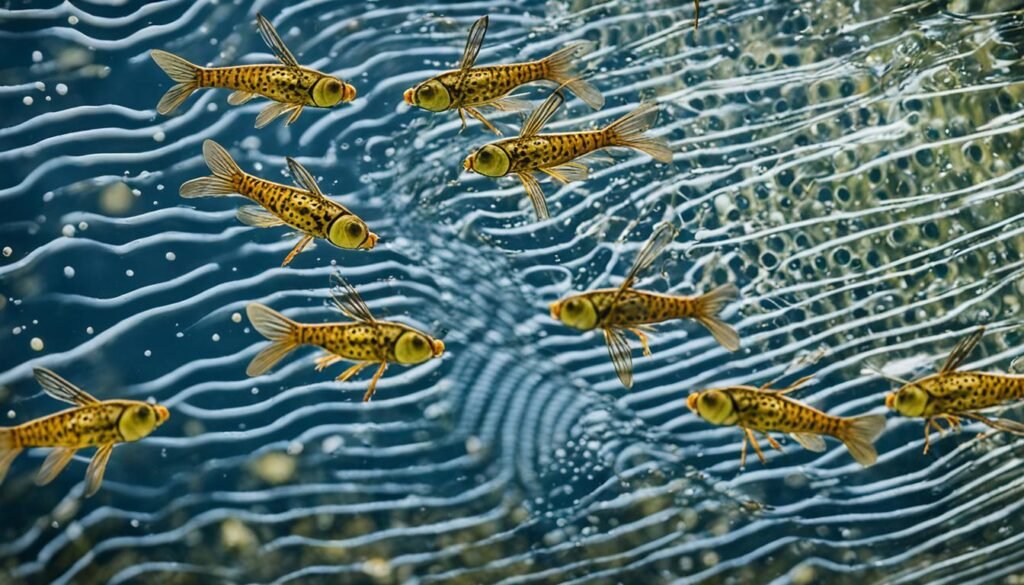
| Signs of Terrestrial Feeding | Effective Rigs |
|---|---|
| Subtle rings on the water surface | Tiny nymph tied as a dropper |
| Black snouts poking above the surface | Beetle or hopper with a nymph dropper |
| A hopper disappearing into a hole in the water | Experiment with different nymph patterns |
Conclusion
Terrestrial insects are vital in fly fishing. They feed trout at some times of the year. During summer, they are everywhere.
Fishing with their patterns can make you catch more trout. Knowing how trout act and the right tricks is key. Paying attention to how trout eat them can also help.
This kind of fly fishing is both exciting and rewarding. It’s a powerful method you should try.
When fly fishing, remember these things about terrestrial insects. They are a big part of what trout eat. This is especially true in the summer.
By learning about trout habits and how to fish terrestrials, you’ll do better. Paying attention to how trout feed on them gives you an advantage. With these tips, you can truly enjoy fly fishing. It will be an experience to remember.
FAQ
What are terrestrial insects in fly fishing?
Terrestrial insects are not water bugs. They include ants, beetles, crickets, and grasshoppers. These bugs end up in the water by falling or crawling.
Why are terrestrial patterns important in fly fishing?
Trout eat these land bugs because they provide a lot of energy. They are a key food source for fish.
When is the best time of year to fish with terrestrials?
Prime time for fishing with terrestrials is summer. Specifically, June, July, and August. This is when these insects are everywhere.
What are some tips for fishing with terrestrial patterns?
When fishing, target shaded areas where trout might be. Make your casts carefully and watch how the water moves beneath your fly.
What are some effective terrestrial patterns for fly fishing?
To catch trout, use flies that look like ants and grasshoppers. You can also try patterns that resemble beetles and crickets.
How do terrestrial insects impact trout feeding behavior?
Land bugs are a big part of what trout eat. They offer lots of nutrients. Big trout especially like eating them.
What are some tips for terrestrial fishing in small streams?
For small streams, use flies like Humpys and Royal Wulffs. Try patterns that look like beetles and ants. Keep an eye out for good spots to cast.
What are some subtle signs of terrestrial feeding and effective rigs?
Watch for circles in the water or fish poking above the surface. If you see these signs, using a dropper rig might help you catch more fish.
What is the importance of understanding trout behavior when fishing with terrestrials?
Knowing how trout act and what they like to eat is crucial for successful fly fishing. This applies especially to when you’re using terrestrial fly patterns.
What is the conclusion on terrestrial insects in fly fishing?
Terrestrial insects are key for fly fishing success at certain times. They offer trout a major food source. As such, using flies that mimic these insects can greatly improve your fishing trips.

